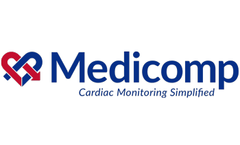Cardiac Event Monitor Articles & Analysis
6 articles found
Background Esophagectomy for cancer involves two- or three-phase procedures, such as abdominal, chest and/or neck incisions, is more invasive than other types of gastrointestinal surgery, and is associated with high risk for postoperative morbidity. Because of this risk, perioperative management of circulatory conditions such as hypovolemic hypotension is especially important to avoid ...
As a technology, photoplethysmography (PPG) has been explored for almost a century, but it is only in the last few years that it has had a broader application beyond specialised medical settings. That has generally been driven by the evolution of smartphones, smartwatches and even smaller wearable devices such as smart rings. PPG is most commonly used in pulse oximetry in clinical settings ...
BySky Labs
Digital pathology has been rising in popularity over the past few years, thanks to the many efficiencies it offers pathologists. Now, the American Medical Association (AMA) has recognized this shift by announcing the introduction of 13 new Current Procedural Terminology (CPT) codes for digital pathology, set to go into effect in January 2023. The codes are Category III, defined as a ...
BELLEVUE, WA — July 29, 2021– A recent clinical study from Overlake Medical Center utilizing the Bardy Diagnostics Carnation Ambulatory Monitor (CAM) patch was presented at the 2021 Heart Rhythm Society (HRS) Conference. The abstract, “Accelerating Proper Evaluation of Emergency Department Patients for Arrhythmia Concerns with Discharge Use of ECG Patch Monitors,” authored ...
Telemedicine, or the ability for a doctor to complete a patient examination remotely utilizing technology, is not a new concept. In fact, the concept dates back to 1925 when Hugo Gernsback published a theory that remote aperture that could be controlled wirelessly to help a doctor physically “examine” a patient. Today’s telemedicine has advanced tremendously with the advent of ...
Background and Purpose - Atrial fibrillation (AF) elevates risk of recurrent stroke but is incompletely identified by standard investigation after stroke, though detection rates correlate with monitoring duration. We hypothesized that 7 days of noninvasive cardiac-event monitoring early after stroke would accelerate detection ...
ByNovacor






